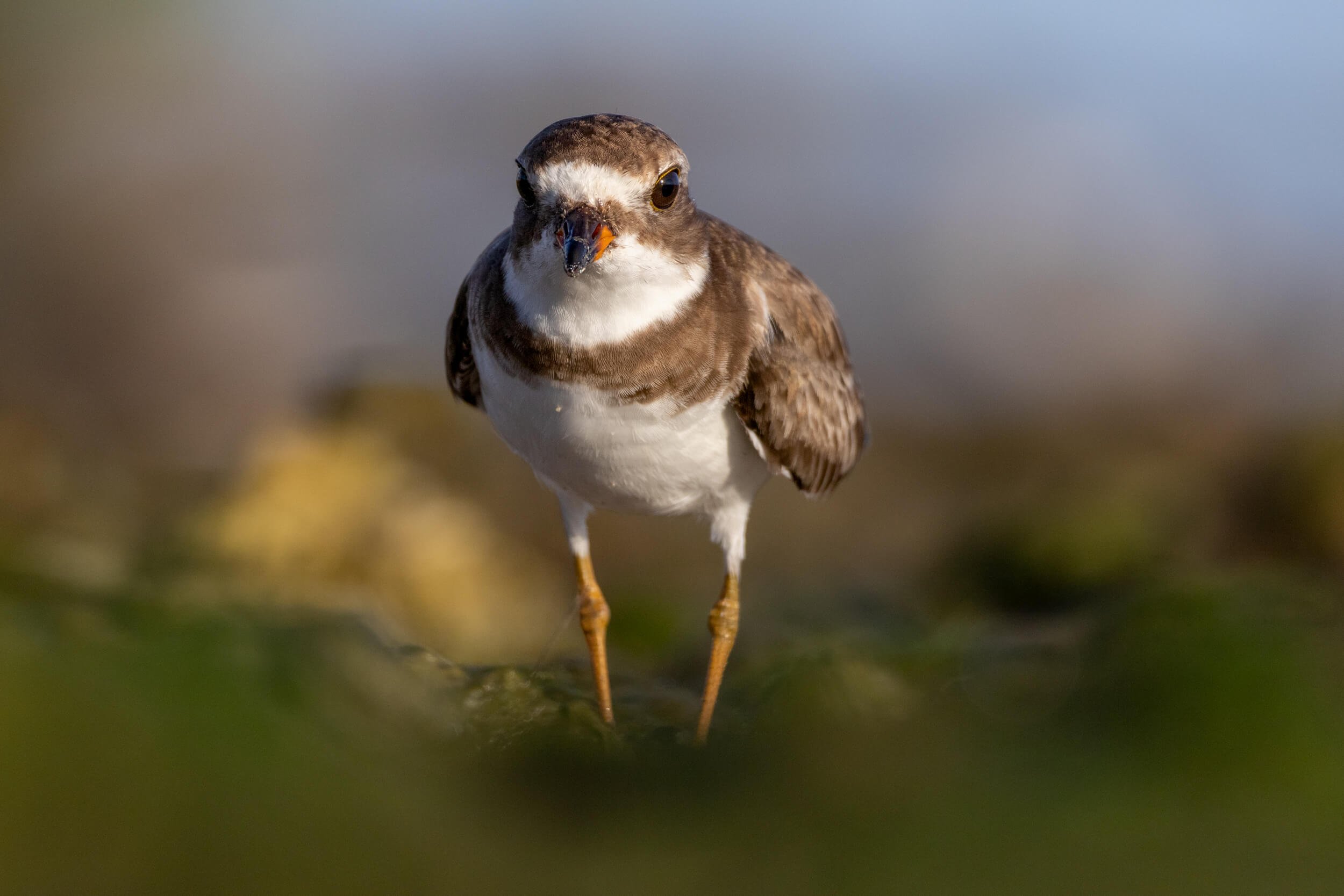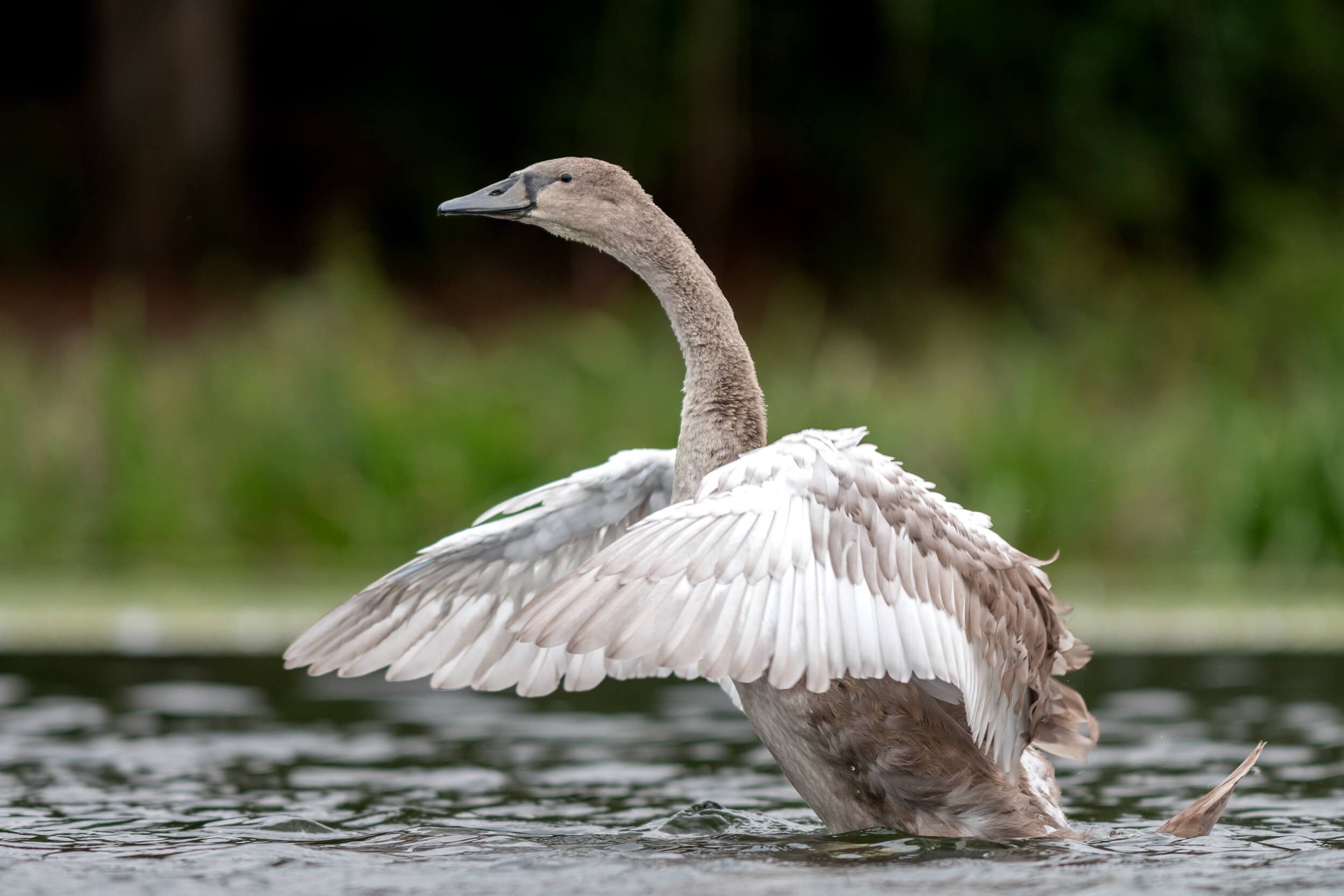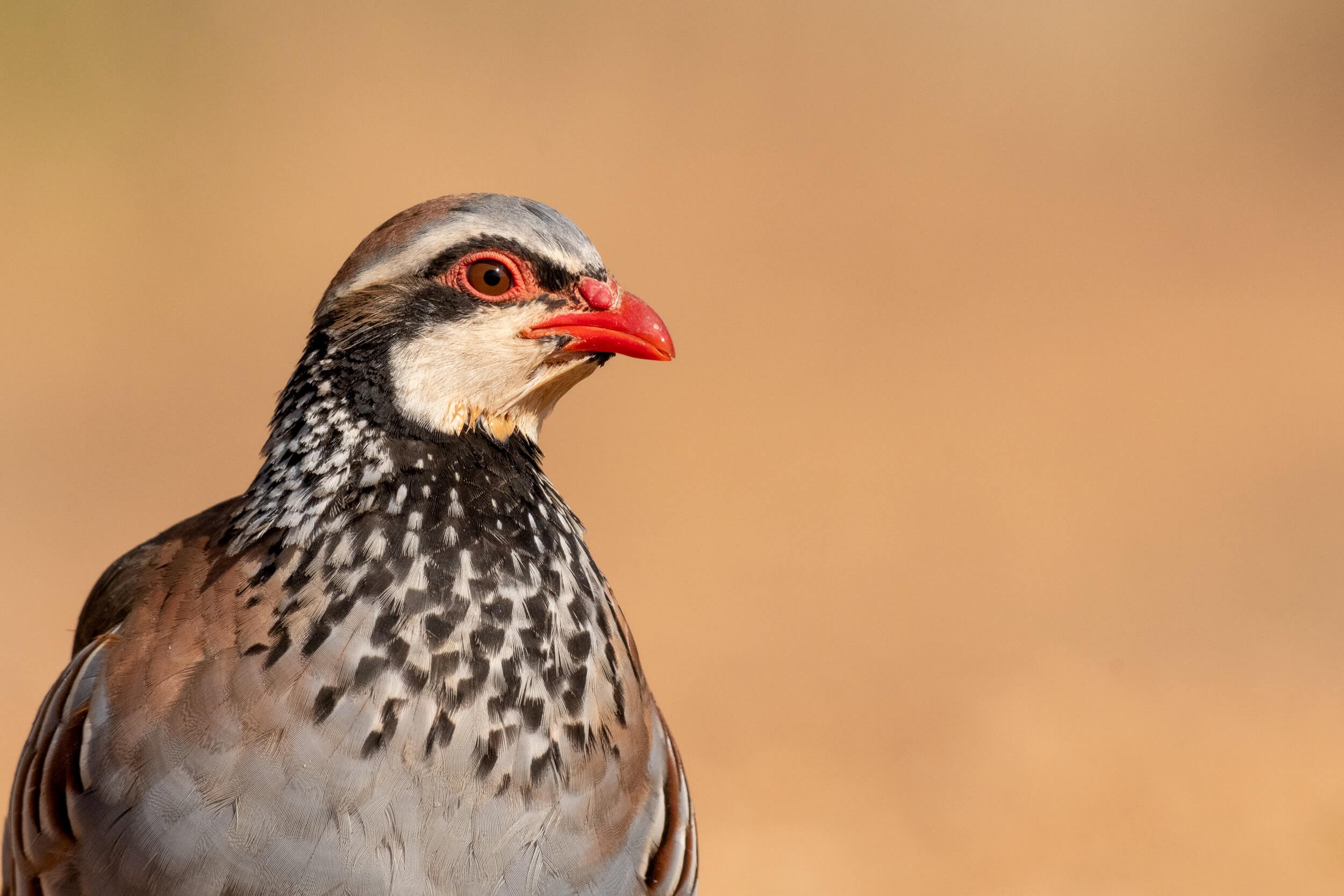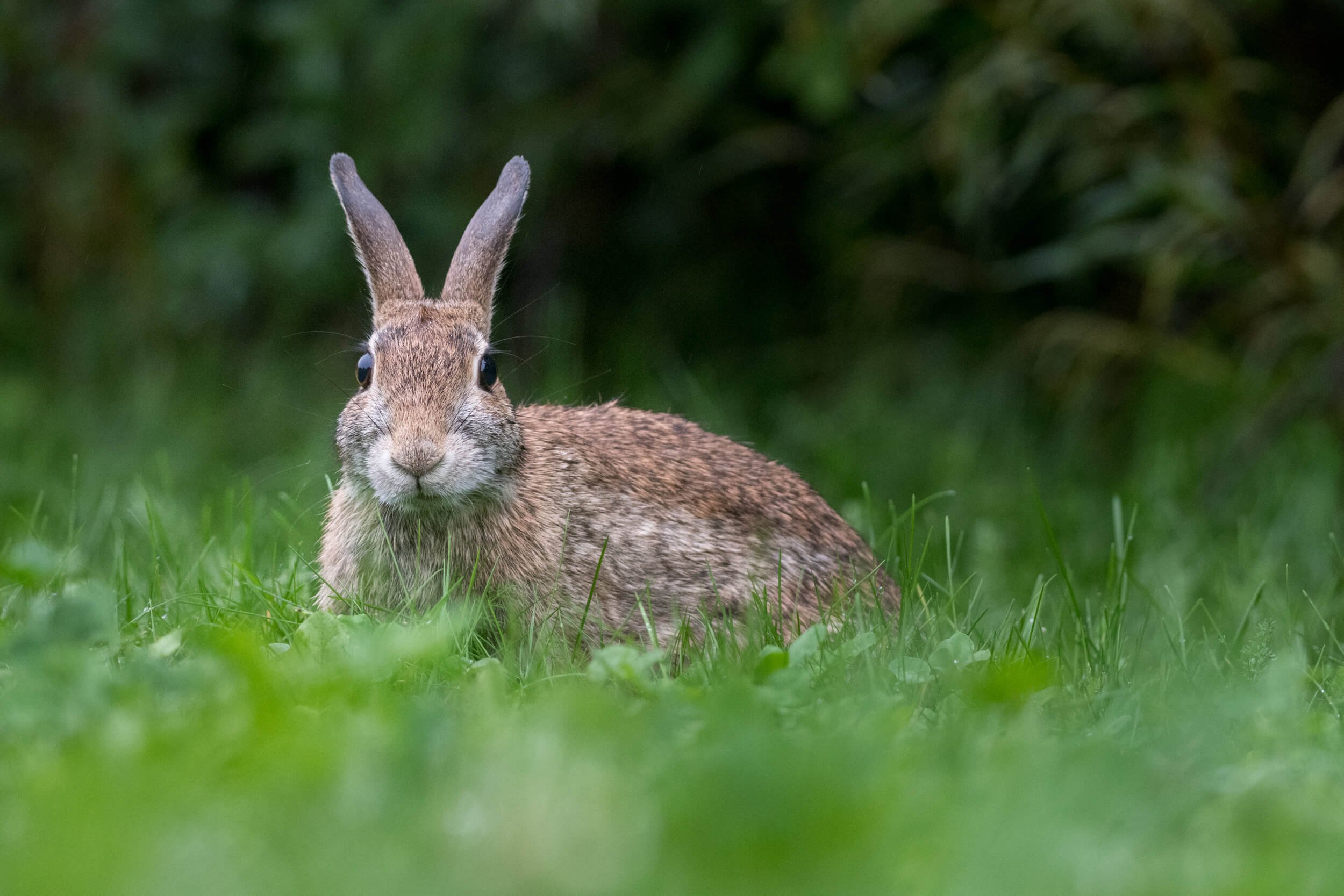9 Essential Tips for Beginner Wildlife Photography
If you're a beginner interested in learning about wildlife photography, you're in the right place.
Wildlife photography can be an extremely challenging yet rewarding hobby. However, with the proper knowledge and techniques, you can capture stunning images of animals in their natural habitats.
In this blog post, I'll share nine essential tips for beginner wildlife photographers to help you get started and improve your skills.
These tips cover everything from choosing the right lens to respecting your subjects and will set you on the path to success in wildlife photography. So let's dive in!
1) Get in early and get out late
White wagtail | Nikon D500 + Nikon 300mm f/2.8 + 2x TC | ISO 640, 1/1000, f/8 @ 600mm
Golden hour
Golden hour, the time just before sunrise and just after sunset, is known to be the best light for wildlife photography.
The low sun casts a warm, soft, golden light that is more evenly distributed and produces a softer, more natural look. It highlights the natural colors and textures of an animal's coat or feathers. This light is also great for creating a sense of atmosphere and mood, adding depth and dimension to a photo.
To capture the beauty of golden hour, you must wake up early or stay out late to catch the best light. Speaking from personal experience, if you do, you'll end up with many more memorable wildlife photos than if you at midday in harsh sunlight. This happened to me with this white wagtail.
Golden hour also provides incredible opportunities for backlit photos, such as silhouettes and rim lighting. Light from behind the animal can create a strong contrast to highlight its shape. These photos can be some of the most dramatic and eye-catching.
To capture backlit images during golden hour, position yourself so the animal is between you and the sun. You can create some truly memorable photos with a bit of experimentation.
Animal activity
In addition to the beautiful light, another reason to photograph wildlife at dawn and dusk is that many animals are more active during these times of the day.
As wildlife photographers, we have to adapt to our subjects' habits, which usually means photographing at early or late in the day when many animals are most active.
For diurnal animals, dawn and dusk are often the times when they are most active and feeding, and for nocturnal animals, these times may be when they are transitioning between their busy and resting periods.
So next time you're out in the field, consider trying to photograph wildlife near sunrise and sunset. You may be surprised by the stunning results and unique perspective it can bring to your photos.
2) Drop to eye level with your subject
Semipalmated plover | Canon R10 + Canon RF 100-400mm F5.6-8 IS USM | ISO 720, 1/1000, f/8 @ 400mm
Another important tip for beginner wildlife photographers is to get as close to eye level with your subject as possible.
This is an excellent piece of advice for a few reasons:
Getting your camera eye level with your subject helps create a more intimate, artistic look in the photo.
It also helps to blur the background and make the subject stand out more.
Creating this powerful, personal connection between the animal and the viewer can help bring the photo to life. To get down to eye level, you may need to crouch, crawl, or lie down to get the right angle, just like I did to shoot this semipalmated plover.
Sometimes, getting to the animal's perspective won't be possible. In these cases, remember that the further you are from a subject above or below you, the more you'll be able to create the illusion of being at eye level with it.
In conclusion, getting the right angle may require some effort, but lowering yourself is worth the enormous impact it can have on your photos.
3) Watch your backgrounds
Great blue heron | Nikon D500 + Nikon 200-500mm | ISO 800, 1/500, f/5.6 @ 500mm
When it comes to beginner wildlife photography, it's easy to get so caught up in the excitement of spotting an animal that you forget to pay attention to the background. But the background of a photo can make or break an image, so it's important to treat pay close attention to it.
Make sure everything is level and watch for busy backgrounds (i.e. excessive vegetation, bright highlights from the sky, etc.) that might distract from the subject. This can be a real eye sore and draw attention away from the animal. If you have a bad background, try moving your camera to see if you can improve the composition.
Paying attention to your backgrounds is a simple but crucial tip for creating better wildlife photos. Photographing an animal is easy, but making a wildlife image with an excellent background is much more difficult.
4) Never follow an animal, always try to be ahead of it
Common moorhen | Nikon D500 + Nikon 300mm f/2.8 + 1.4x TC | ISO 1250, 1/1000, f/5.6 @ 420mm
If you're starting in wildlife photography, you may be tempted to try to follow an animal as it moves through its habitat. But this approach usually leads to missed shots, frustration, and pushing the animal farther away from you, which may negatively affect it.
Instead, try to get ahead of the animal and get to where it's going. Let the animal come to you, and you'll find that you get much better results.
For example, when I was photographing this common moorhen, I noticed it was feeding along a long shoreline. I took the long way around it to get far in front of it in the direction it was coming, and I managed to snap this shot.
These tips take a little practice, but it's worth the effort to create more successful photos.
5) To get closer, look distracted
Ruddy turnstone | Nikon D500 + Nikon 300 PF + 1.4x TC | ISO 1000, 1/1000, f/7.1 @ 420mm
Sometimes you may want to get closer to an animal to capture a more intimate shot, but the animal may be shy or skittish. In these cases, it can help to look away or appear distracted.
When an animal senses a photographer focused on them, they may become warier and retreat. But if you appear to be looking at something else or not paying attention, the animal may be more likely to approach or allow you to get closer.
To avoid walking directly at wildlife (which is likely to scare them off), another helpful tip is to walk in S shapes towards your subject while looking at the ground. This strange pattern is less likely to tip the animal off about your true intentions, allowing you to get closer for photos.
This technique is useful for photographers of all levels and can help you capture more personal and unique wildlife photos.
6) Use the right lens for the situation
Mute swan | Nikon D500 + Nikon 300mm f/2.8 + 1.4x TC | ISO 560, 1/500, f/4 @ 420mm
When it comes to beginner wildlife photography, the right lens can make all the difference in the quality and composition of your photos. Different lenses offer different focal lengths and aperture ranges, which can impact the way you capture an animal in its environment.
A telephoto lens with a long focal length, such as my Nikon 300mm f/2.8 is great for getting close-up shots of animals from a distance (especially with teleconverters, like the 1.4x TC and 2x TC), while a wide-angle lens, is better for capturing the surroundings and context of the animal.
Consider the type of animal you're photographing and the shot you want to achieve, and choose a lens that best supports your vision. Experiment with different lenses to see what works best for you.
7) Consider using a blind or hide
Red-legged partridge | Nikon D500 + Nikon 300mm f/2.8 + 2x TC | ISO 1000, 1/1000, f/11 @ 600mm
If you're having trouble getting close to shy or skittish animals, you might consider using a blind or hide.
These are both structures that allow you to observe and photograph animals from a concealed position. A blind is portable, whereas a hide is permanent. Both options can help you get closer to animals without disturbing them, leading to more natural and intimate photos.
In August 2022, I spent a few days in a hide, where I photographed several elusive species in Spain, like this red-legged partridge. Without being concealed, I would not have been able to photograph these beautiful birds.
8) Be patient and wait for the perfect moment
Iberian ibex | Nikon D500 + Nikon 300 PF + 1.4x TC | ISO 1800, 1/500, f/5.6 @ 420mm
One of the most crucial tips for beginner wildlife photographers is to be patient and wait for the perfect moment.
Wildlife photography can be unpredictable, and it often takes time to get your desired shot. In my own experience, I have had many sessions in which I don't get the photos I want. Sometimes I don't get them for months or even years, but that's all part of the process.
During a shoot in the mountains of Spain, I hid near a place where I knew Iberian ibex would graze. After waiting for the animals to appear, this handsome young male walked in my direction and I grabbed this shot.
Don't rush things or try to force a photo that isn't there. Instead, take your time and wait for the animal to do something exciting or for the light to be just right. This can require a lot of patience and persistence, but capturing an excellent wildlife photo is worth the effort.
9) Respect the animals and their habitats
Cottontail rabbit | Nikon D500 + Nikon 200-500mm | ISO 1800, 1/250, f/5.6 @ 200mm
As a beginner wildlife photographer, it's important to prioritize the well-being of the animals you photograph. This means being mindful of your impact on their environment and following local laws and guidelines to ensure you do not disturb or harass them.
When you are out in the field, remember that you are a guest in the animals' home and should treat them with respect by maintaining a respectful distance and avoiding making loud noises or sudden movements.
It's always better to photograph an animal behaving naturally, rather than one that is agitated or trying to escape from you. So, be mindful of your presence and actions, and strive to capture authentic and honest images that showcase the beauty and majesty of the natural world.
Conclusion
Congratulations on making it through these nine essential tips for beginner wildlife photographers! I hope you've found them useful and are inspired to capture your own stunning images of animals.
Wildlife photography is a rewarding and challenging hobby, but with the right knowledge and techniques, you can create truly memorable and meaningful photos. From getting up early to catch the best light at golden hour to getting down to eye level with your subjects, these tricks will elevate your photos to new heights.
Whether you're a beginner or an experienced photographer, I hope you continue to learn and grow in your craft. I can't wait to see what amazing wildlife photos you create!
If you're interested in continuing to learn and improve your skills as a wildlife photographer, I have plenty of tutorials and gear reviews to help you on your journey. Happy shooting!
Want to become a better wildlife photographer?
If you are interested in learning more about the technical and artistic side of photography to take your photos to the next level, check out these awesome tutorials that can help you take amazing wildlife photos!









